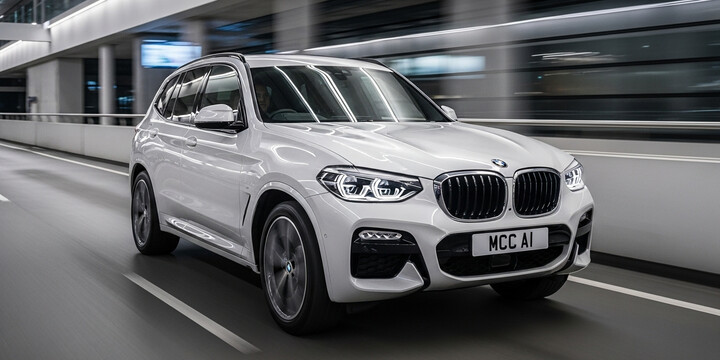
BMW X3 (2021-24) XDRIVE20I 5DR SUV 2.0I MHT 184 GPF SS EU6 XLINE AUTO8
The BMW X3 (2021-24) XDRIVE20I 5DR SUV 2.0I MHT 184 GPF SS EU6 XLINE AUTO8 is a stylish and versatile luxury SUV that occupies a prominent position in the UK market. Designed to combine comfort, performance, and practicality, this model is ideal for families, busy professionals, and those seeking a reliable, all-round vehicle. Its SUV build offers ample space for passengers and cargo, making it a perfect choice for daily commutes, family outings, or longer road trips. Known for its refined driving experience, the BMW X3 XDRIVE20I stands out with its sophisticated design, smooth automatic transmission, and efficient fuel economy, especially for a vehicle in its class.
Compared to its rivals, the BMW X3 (2021-24) XDRIVE20I is praised for its impressive build quality, advanced features, and strong reputation for reliability. Its popular XLINE trim adds a touch of luxury, with stylish interior and exterior details. The vehicle typically sees an average recorded mileage of around 30,299 miles and a private sale value of approximately £34,943, reflecting its appeal in the used car market. Whether you're a first-time buyer, a family looking for space, or a commuter wanting a comfortable drive, the BMW X3 XDRIVE20I remains a compelling choice, well regarded for its blend of luxury, performance, and everyday practicality.

average use

The data indicates that the majority of BMW X3 (2021-24) XDRIVE20I models with the specified features have recorded mileage readings between 0 and 10,000 miles, accounting for approximately 80.8% of the sample. Smaller proportions are found in higher mileage brackets, with 11.5% estimated between 20,000 and 30,000 miles, and a minimal 3.8% each in the 30,000 to 40,000 and 40,000 to 50,000 mile ranges. This suggests that most vehicles of this model are relatively low mileage, which could be appealing for buyers seeking newer or less-used vehicles.

vehicle values

The provided data shows the typical private sale price ranges for a BMW X3 (2021-24) XDRIVE20I 5DR SUV. The most common price brackets are between £27,000 and £34,000, with several ranges within this window, each representing around 3.8% to 11.5% of sales. Notably, the lowest and highest price categories (£25,000–£26,000 and £45,000–£46,000) have smaller proportions of sales at 3.8%, indicating less frequent transactions at these extremes. There is a visible concentration of private sale prices in the mid-range of around £30,000 to £34,000, suggesting this is the typical market value for such vehicles within the sampled data.

production years

The data indicates that the majority of the BMW X3 (2021-24) XDRIVE20I models are manufactured in 2022, accounting for approximately 69.2%. A smaller proportion, around 19.2%, are from 2023, with only a small share from 2021 (3.8%) and 2024 (7.7%). This suggests that most vehicles in this model range on the market are relatively recent, with a significant concentration produced in 2022, possibly reflecting high demand or production focus during that year.

colour popularity

The data indicates that among the BMW X3 (2021-24) XDRIVE20I 5DR SUV models, grey is the most common main paint colour, accounting for 46.2% of the vehicles. White is the second most popular at 34.6%, while black and blue are less prevalent, representing 11.5% and 7.7% respectively. This suggests that buyers tend to prefer more neutral and subdued colours, with grey and white dominating the palette.

ownership cycle

The data indicates that the majority of this BMW X3 model, specifically 92.3%, have had only one registered keeper, suggesting it is largely owned by the same individual over time. A smaller proportion, 7.7%, have had two registered keepers, which may reflect a minority of vehicles changing hands more than once. Overall, this pattern suggests relatively stable ownership for this model within the sample.

engine choices

The data indicates that all BMW X3 (2021-24) XDRIVE20I models with the specified variant are fitted with a 2.0-liter engine, and their primary fuel type is hybrid electric. This suggests a consistent use of hybrid technology and engine capacity across this vehicle range, highlighting a focus on fuel efficiency and possibly lower emissions for these models.












